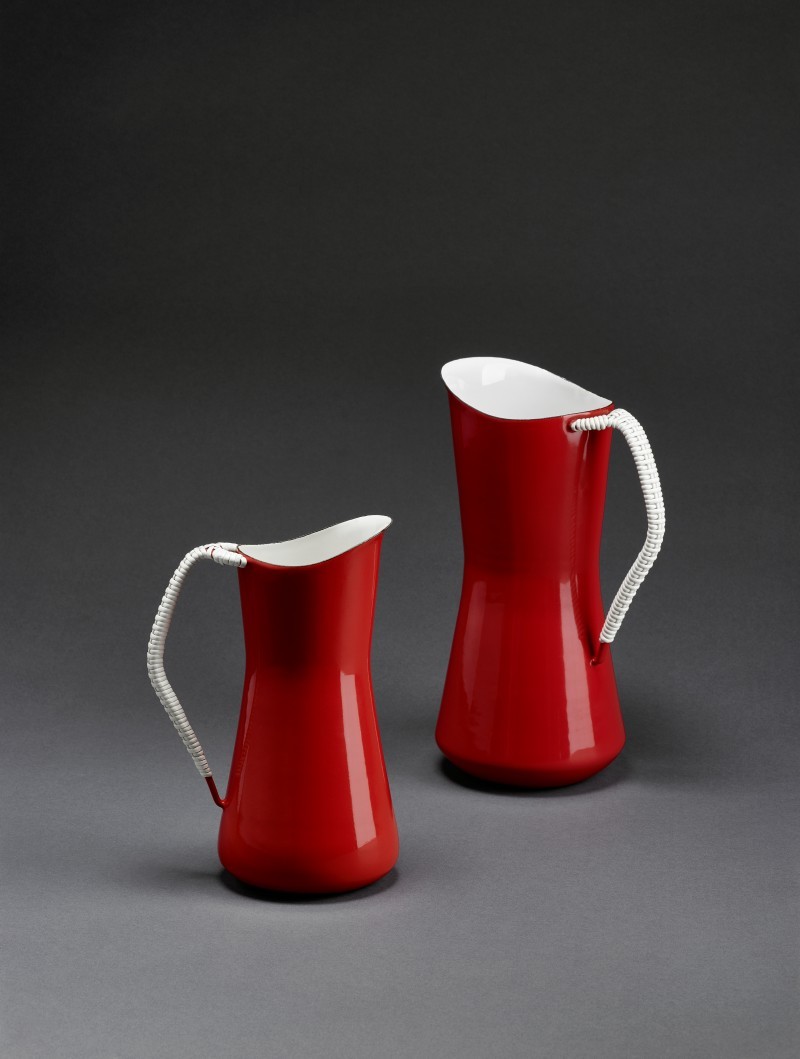Jens Harald Quistgaard hat in den 1950er-Jahren diese farbenfrohen Kannen entworfen, die Teil der Serie Købenstyle sind und für Küche und Tafel gleichermaßen gedacht waren. Es sind wohl seine bekanntesten und kommerziell erfolgreichsten Arbeiten, die er für Dansk Designs, einen US-amerikanischen Vertrieb, schuf.
Hersteller dieser Kanne ist die Firma Glud & Marstrand, die zwischen 1955 und 1964 produzierte.
Schenkung / donation Inge & Wilfried Funke, 2017
2017.237
Die Angaben beziehen sich auf die linke, etwas kleinere Kanne.
en

